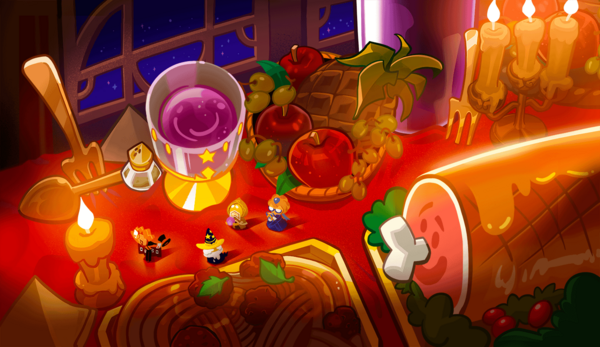The official discord link if you wish to join the discord: https://discord.gg/j5RKwCvAFu
Support the wiki on our official Ko-Fi page or Patreon page!
Small Size: Difference between revisions
| (13 intermediate revisions by 5 users not shown) | |||
| Line 1: | Line 1: | ||
== | [[File:Small cookies.png|center|600px]] | ||
==Background== | |||
Some characters are considerably smaller than most, which can cause many of their physical parameters, such as strength, speed (Although many small-sized characters can move around the human body in relatively short periods of time), and durability to be lower than characters who are larger. However, many small characters can ignore durability by harming vital parts of the body, and can mostly avoid physical attacks from larger characters, seen with viruses and bacteria in real life. We call this having a '''Small Size'''. | Some characters are considerably smaller than most, which can cause many of their physical parameters, such as strength, speed (Although many small-sized characters can move around the human body in relatively short periods of time), and durability to be lower than characters who are larger. However, many small characters can ignore durability by harming vital parts of the body, and can mostly avoid physical attacks from larger characters, seen with viruses and bacteria in real life. We call this having a '''Small Size'''. | ||
| Line 7: | Line 8: | ||
==Types== | ==Types== | ||
Small sizes are classified in the following manner: | Small sizes are classified in the following manner: | ||
| Line 28: | Line 28: | ||
'''Type 8 (Quantum)''' Characters who are near or at the Planck length, or comparable in size to quantum foam or strings. Any characters smaller than this could be inhabiting lower dimensions, and by nature they could not be perceived. | '''Type 8 (Quantum)''' Characters who are near or at the Planck length, or comparable in size to quantum foam or strings. Any characters smaller than this could be inhabiting lower dimensions, and by nature they could not be perceived. | ||
'''Type 9 ( | '''Type 9 (Planck Length)''' Characters who the size of or are smaller than the Plank length. These characters typically can't interact with the physical world as we know it. | ||
[[Category:Powers and Abilities]] | [[Category:Powers and Abilities]] | ||
Latest revision as of 22:02, 12 June 2024

Background
Some characters are considerably smaller than most, which can cause many of their physical parameters, such as strength, speed (Although many small-sized characters can move around the human body in relatively short periods of time), and durability to be lower than characters who are larger. However, many small characters can ignore durability by harming vital parts of the body, and can mostly avoid physical attacks from larger characters, seen with viruses and bacteria in real life. We call this having a Small Size.
This should not be confused with Size Manipulation, as while manipulating one's size does grant one a larger or smaller size, someone with small size cannot, by default, actually control their size.
For a comprehensive scale of sizes down to the plank length, see here.
Types
Small sizes are classified in the following manner:
Type 0 (Dwarf): Characters far smaller than an ordinary human. No larger than 1 meter tall.
Type 1 (Small Animal Sized) Characters the size of small animals. No larger than 50 centimeters tall.
Type 2 (Bug-Sized) Characters much smaller than typical mammals, usually bugs and insects. No more than a few centimeters tall.
Type 3 (Microscopic) Characters no more than a millimeter in size. Starting from this level, characters begin to become smaller than the human eye can see.
Type 4 (Molecular) Characters no more than than a micrometer in size. Starting at this level, characters are smaller than most microscopes can view, and can begin to interact with the particles that make up larger organisms.
Type 5 (Atomic) Characters no more than a nanometer in size. Characters of this size can be smaller than even advanced electron microscops can see, and would generally be unaffected by most conventional attacks.
Type 6 (Sub-Atomic) Characters no more than 53 pm in length, or the size of a Hydrogen Atom. At this point, quantum mechanics would begin to largely effect objects of this size.
Type 7 (Elementary) Characters comparable in size to the nucleus of an atom, or elementary particles such as protons, neutrons, and electrons.
Type 8 (Quantum) Characters who are near or at the Planck length, or comparable in size to quantum foam or strings. Any characters smaller than this could be inhabiting lower dimensions, and by nature they could not be perceived.
Type 9 (Planck Length) Characters who the size of or are smaller than the Plank length. These characters typically can't interact with the physical world as we know it.
